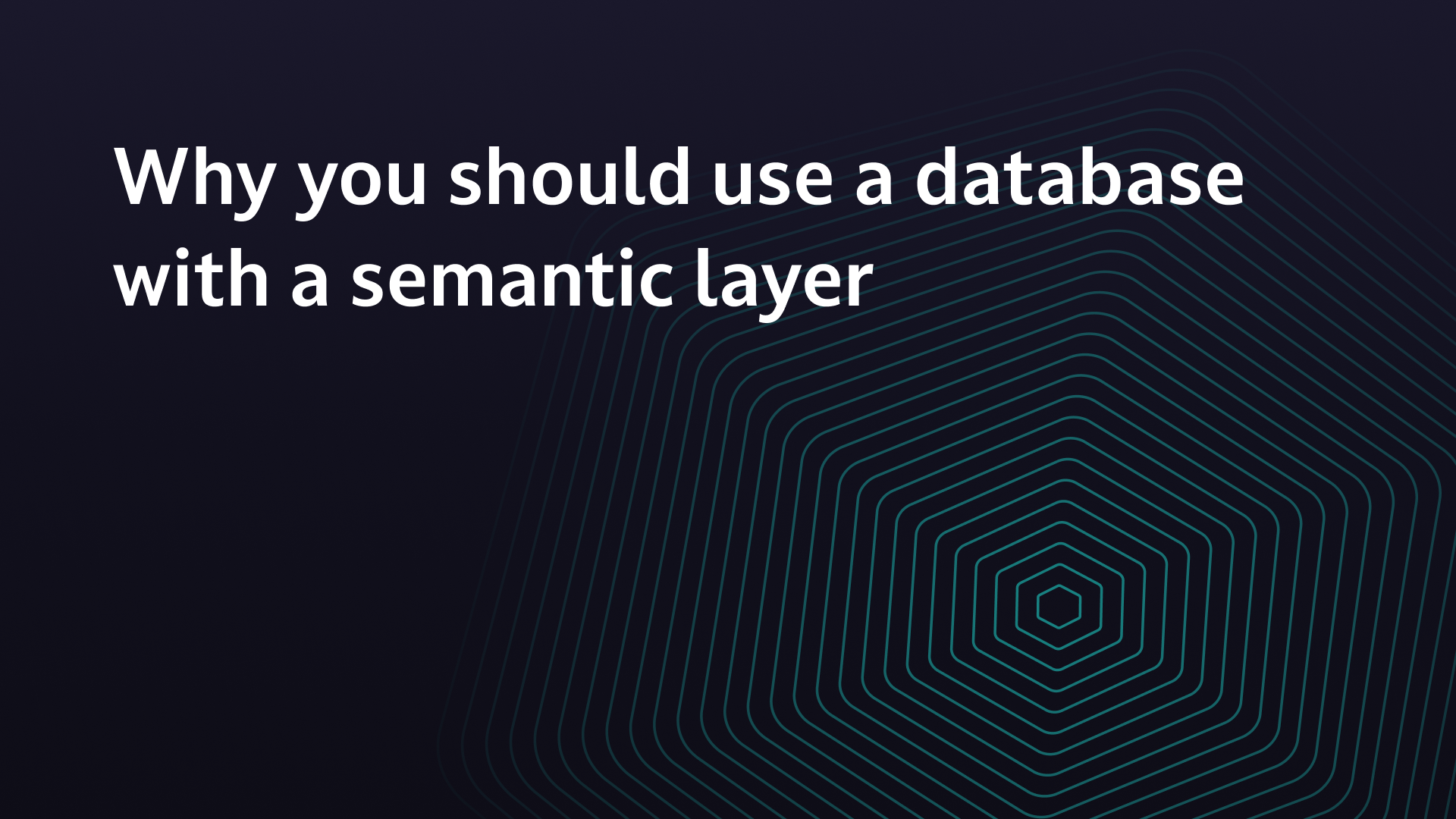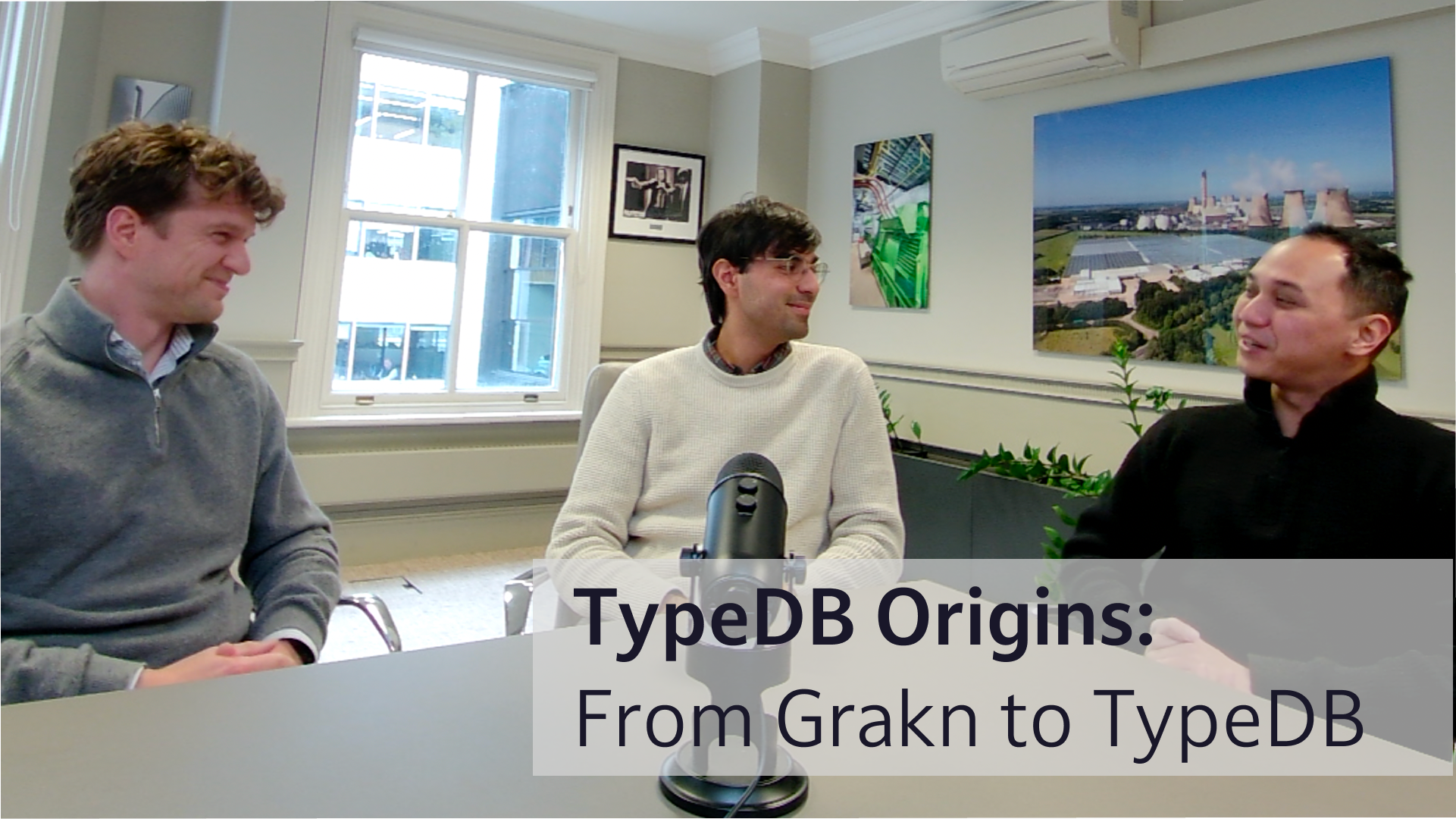Why You Should use a Database with a Semantic Layer

Preventing Data Drift and Ensuring Query Safety with Semantic Models
When structure isn’t enough
Modern data systems are rich in structure but poor in meaning. You can define foreign keys, assign data types, and nest documents, but your database still doesn’t understand what your data is supposed to mean.
This gap is what we call semantic integrity loss: a slow drift away from the rules and relationships that define the truth of your domain. And it happens not because developers are careless, but because most databases simply don’t offer the tools to express or enforce semantics.
In this post, we explore how semantic layers provide a principled way to restore that meaning. We’ll walk through the limitations of relational, document, and graph databases; what a semantic layer actually is; and how it enables safer modelling, better queries, and more robust systems.
What traditional databases miss
Relational databases are widely considered strongly typed, but only within a limited syntactic scope. They know that an INT is not a VARCHAR, but they don’t know that a contractor shouldn’t be assigned a permanent salary, or that a user must be either an employee or a contractor, but never both.
These are semantic constraints, and expressing them in SQL requires either fragile table arrangements (like table-per-type inheritance) or complicated triggers and application-layer enforcement.
Document databases (like MongoDB) shift this responsibility even further out. They may enforce schema-on-write (sometimes), but they cannot track relationships across documents. This leads to either:
- Redundancy (duplicated embedded objects), or
- Drift (orphaned references and inconsistent structures)
Even graph databases, despite their flexibility, often lack deep type enforcement. Problems include:
- Nodes holding inconsistent label combinations (e.g., PermanentEmployee without being an Employee)
- Relationships between nodes that shouldn’t logically interact
- No enforcement of required structures or disallowed combinations
In all of these cases, the system accepts data that violates the intent of the model, because the model isn’t rich enough to encode the intent.
What is a semantic layer?
A semantic layer is a structural abstraction that sits above your raw data and encodes the meaning of your domain. It defines what things can exist, and how they can interact.
For relational, document, and graph databases these layers are often implemented as separate abstractions or services that allow businesses to encode more meaningful data constraints and relationships.
To quote Wikipedia:
- Semantic layers map complex data into familiar terms
- Offer a unified, consolidated view of data across the organization
- users to have a common “look and feel” when accessing and analyzing data stored in relational databases and OLAP cubes
These are parallels and synergies with Domain-Driven Design, which also aims to provide a unified, systematic approach to designing architectures and data models. Both ideas aim to improve correctness, clarity, and speed of thought and execution.
Ultimately, the semantics of your data always exist somewhere. A database with minimal provided structure, like document databases, will force you to write the semantics into your application code; leading to duplication, re-invention of same software patterns over and over, and a data model scattered across application backends.
On the other hand, some commercial and library applications allow defining semantics as an additional burden on top of a relational database, and others again can push much more modeling and semantic burden into a unified database backend.
A valuable semantic layer allows you to push as many of your data model’s constraints as close to the database as possible, while incurring the least computational and maintenance cost.
TypeDB: semantics by design
What’s the easiest way to build a database with a semantic layer? Use a database that understands semantics of your data, without a separate layer that requires maintenance and processing.
TypeDB’s data model automatically doubles as a semantic model. Rather than lists or table, its schema is a typed model built from four primitives: entities, relations, attributes, and roles.
Each of these has built-in semantics:
- Entities represent core objects
- Relations define how entities interact
- Roles specify valid participants in relations
- Attributes add typed values to entities and relations
TypeDB validates every query against this model, enabling you to catch errors like:
- Assigning the wrong role to an entity
- Querying for relationships that aren’t logically permitted
- Inserting data that violates structural constraints
Since the engine understands the schema semantically, your data is validated rigorously, and queries can be optimized specifically for the semantics of your schema.
This is exactly what a separate semantic layer normally does, or what your application has to do without one! TypeDB lets you push more logic, abstraction, and model nuances into the database layer. As a result, all your database users automatically benefit from the unified language and data consistency.
TypeDB enables you to support complex domains like cybersecurity, robotics, life sciences, finance, and risk – anywhere structural clarity, logical correctness, and schema expressivity matter.
Want to try it yourself? Get started quickly at cloud.typedb.com, no installation required.
Build better systems with semantic integrity
Semantic integrity maintenance has strong practical applications beyond the theoretical value. It’s required to:
- Avoid data drift
- Share clear domain models
- Build safer, faster, more resilient systems
Most databases offer some tools for structure. Few offer tools for meaning.
Semantic modeling brings meaning back to the forefront. It makes your schema more than just metadata; it becomes the backbone of your logic, the validator of your queries, and the foundation of query optimization.
If you’re working in a complex, high-integrity domain, ask yourself: does your database protect your meaning, or just your tables?
If you’re building a high-integrity, regulated, or safety-critical system, semantic guarantees might be a non-negotiable.
FAQ: Semantic Layers
What’s the difference between a semantic layer and a schema in a traditional database?
A traditional schema defines the structure of your data (e.g. tables, collections, fields). A semantic layer defines the meaning of that structure, what things represent, how they relate, and what constraints govern them. In TypeDB, the schema is automatically a semantic model by construction!
Can’t I enforce semantics in my application layer?
You can, but that pushes logic out of the database, making systems harder to reason about, audit, and maintain. A semantic layer brings that logic closer to the data. Even better: use a database that understands semantics without separate layers or enforcement mechanisms.
What kind of domains benefit most from semantic integrity?
Any domain with rich, interrelated concepts, like finance, logistics, cybersecurity, AI, life sciences, and robotics. And given the rich nature of the schema and language, Agentic AI systems are more effective in any domain.
How do I try a database that understands semantics natively?
Head to cloud.typedb.com to spin up an instance, try modelling your first schema, and get started.
TypeDB: The database that understands your data semantically



